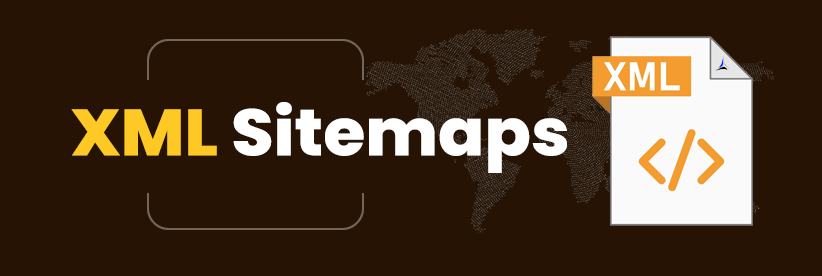SEO XML
Sitemaps

An XML sitemap makes your website readable for search engines through listing pages on the content page. It increases the appearance of your website and indexes it on search engine pages.
It is important for a website that contains various web pages because XML sitemaps assist search engines in indexing the web page. Suppose your website has content related to the news or something that needs to be updated timely. In that case, using XML sitemaps can help you measure the changes on web pages.
You can make SEO better by using an XML sitemap. You can submit it to the Google Console, which can assist you in managing your website's appearance on search result pages.

An XML site is a way to manage your website. It lists the crucial pages of your website that are expected to be indexed by search engines. XML sitemaps help provide details, like the last changes to a website. It has a machine language that search engines can understand.
The various benefits of using an XML sitemap are as follows:
An XML sitemap makes your website readable by search engines by listing crucial web pages. This also assists in indexing your website on search engines. Improve website search ranking. with the help of XML sitemaps, which assist search engines in crawling your site.
There are various tools to produce an XML sitemap, such as:
You must submit an XML sitemap to the Google Console that will assist search engines in indexing your website. Search engines can also crawl your webpage after your XML sitemap submission.
The various steps need to be followed for creating the XML sitemap:
You can organize XML sitemaps for services related to the third party and web server.
A web server is a general way to host the XML sitemap. It takes work to maintain. Web Server is accessible, and you can control your files using it.
A third party is an easy option. In case of the unavailability of technical experts, you can refer to this option. You can find the various services here.
The various factors that affect the hosting of an XML sitemap are:
Cost: You need to make no such charges for XML sitemap hosting. A web server is available for free, through which you can host an XML sitemap. In comparison, third parties are a little expensive.
Control: You need control over the file while hosting an XML sitemap on a web server. You can change the web page according to your needs, which gives you authority. On the other hand, third parties won't give you control over web pages.
Convenience: Maintaining an XML sitemap on a web server is inconvenient, whereas a third party is more convenient for you to keep.
You need to update the XML sitemap frequently. If you made any changes to a web page or added some new pages, you must also update the XML sitemaps. Your website's discoverability and indexing by search engines can be improved by having this feature.
The updates to XML sitemaps depend on the changes to the website. Suppose you make changes regularly to your website. In that case, you should keep updating the XML sitemap regularly. If you rarely make changes to your website, you can edit the XML sitemaps once a month.
You can update your XML sitemap as follows:
The three types of XML sitemaps are:
You must follow the steps to submit the sitemaps to the search console. These steps are as follows:
By following these steps, your website can be indexed by Google.
It would be best if you considered various factors while submitting an XML sitemap, including:
XML sitemaps help list URLs of web pages by including the date of modification and so on. In contrast, the sitemaps make the website accessible to visitors.
You must use an XML sitemap to get high rankings and indexing for your website on search engines.
Having an XML sitemap can improve website indexing by search engines.
XML sitemaps need manual work; you need to keep them updated. They don't tell you about your website's ranking.
Having an XML sitemap for your website is crucial for search engine optimization as it helps crawlers easily index pages. Your website can get high rankings on search engines through an XML sitemap.
There are various benefits to using an XML sitemap, like:
A sitemap is a listing of pages on a website, and an XML sitemap consists of information about the pages in detailed form. The sitemap is related to the menu, whereas the XML sitemap is connected to the description in the menu.
XML sitemaps have various benefits, like:
This is one of the reasons why search engines rank your website through SEO services.